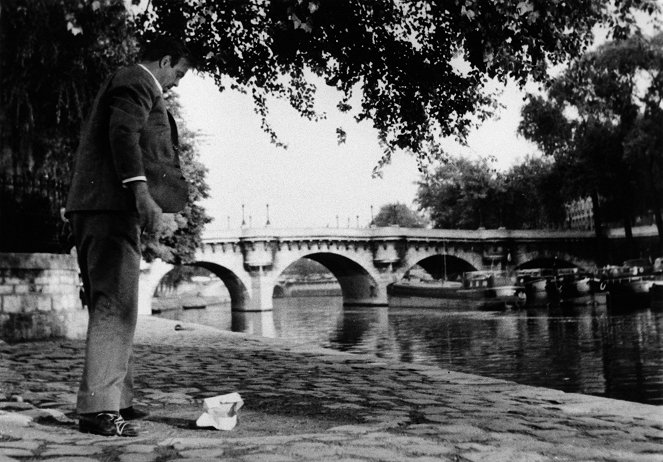Rendező:
Eric RohmerForgatókönyvíró:
Eric RohmerOperatőr:
Nicolas HayerZeneszerző:
Louis SaguerSzereplők:
Jess Hahn, Stéphane Audran, Michèle Girardon, Macha Méril, Françoise Prévost, Jean-Luc Godard, Marie Dubois, Paul Crauchet, Jean Le Poulain (több)Tartalmak(1)
Pierre Wersselin, a musician of foreign extraction, lives in Saint Germain-des-Près where he's more given to idleness and enjoying nightlife than to composing his sonata. He supports his lifestyle by borrowing money from his friends. One July morning he receives a telegram informing him of the recent death of his rich aunt and, convinced he's in for a windfall, he throws a party with the money of one of his friends. He soon finds out that his aunt has disinherited him in favour of his cousin. Pierre, who was counting on the money, now finds himself out on the street. (Les Films du Losange)
(több)Recenziók (1)
Eric Rohmer’s first and, for the next eight years, only feature-length film is a fatalistic morality tale about false wealth, false friends and the true pride of a lion. For one night, Pierre is transformed into a king who observes the beauty of Paris at night from the window of his apartment, but he is soon forced by fate (we are made aware of a higher power by, for example, topographical shots of the city) to descend into the streets, among his subjects, and to live for the present moment out of necessity, not just in extravagance. He goes from the centre of society’s interest to its fringes. He begins a multi-week martyrdom as a homeless man, during which he not only (literally) touches bottom, but also steps out of the circle of mundanity (he is finally going somewhere), discovers his limits (materialised in stone, which the French also call “pierre”) and real, i.e. unselfish friendship. But can such a proud man really change? ___ Rohmer doesn’t answer that question; he only asks and observes. He doesn’t require our sympathy. More than the protagonist, he is interested in the idea, which he slowly conveys and for the sake of which he is not reluctant to leave Pierre to his fate at any time and to give space to one of the supporting characters. The naturalistic observation of everyday events bears the imprint of the neorealism and ethnographic techniques of Jean Rouch, who had a direct influence on Rohmer. The camera follows the protagonist from a distance and often from a single position, without changing angles, as if there was no time or possibility to stage the given situation. ___ The transformation of the protagonist’s priorities and his state of mind is brought to our attention through an inconspicuous change in the filming of the setting, which fits in with the docufictional concept throughout the film. Food, which becomes a necessity for Pierre, is increasingly present in the shots. The camera gradually becomes less avoidant of other sides of Paris (secluded streets, a predominance of night scenes, numerous shadows). As in Rohmer’s later films, the setting expands the protagonist’s inner world and faithfully reflects his current psychological state. For the desperate American, Paris is both a prison and a final refuge. The ending is equally ambivalent, turning the previous impression of a spiralling drama upside down. But is the final twist a return to Pierre’s own essence or a turning away from it? Answer according to your own sign. 80%
()

